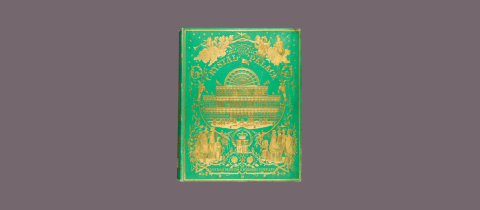It is part of human nature to try to rationalize illness and misfortune. Today, many point accusing fingers at pesticides, food additives, or electromagnetic radiation as possible culprits in undermining our health. In less sophisticated times, witchcraft was deemed to be responsible. Natural disasters and sicknesses were due to spells cast by those in league with the devil. Then, as now, people feared what they did not understand. And they did not understand witchcraft.
Witches did exist. Perhaps it is more accurate to say that people labeled as witches did exist. Who were they? Mostly women who were denied access to education and began to dabble in a strange mix of botany, primitive pharmacology, and superstition. They blended herbs, plants, and animal parts in bubbling cauldrons to produce medicines, love potions, or poisons as needed. Some of the ingredients could indeed cure, kill, or distort reality and so it is not surprising that "witches" were held both in awe and fear. The superstitious medieval mind readily accepted suggestions that human misery was due to the casting of evil spells.
Why? Because they could do something about it! People felt that their destiny was in their hands. Witches could be searched out and killed and thereby the spell lifted. From the 15th to the 17th century, some 200,000 innocent people were burned, drowned, or tortured to death with the hope of relieving the world from suffering. Since it was believed that witches could change into black cats, even these unfortunate creatures were hunted down and killed. This had the consequence of increasing the rat population and spreading the plague. Since, the plague was supposed to be the work of witches, more unlucky people were accused, rounded up, and annihilated. In Spain, during the Inquisition, suspected witches were forced to wear conical pointed hats so that they could be instantly identified. This likely gave rise to the common stereotype of the witch in the black pointed hat.
The boiling cauldron, immortalized by Shakespeare in Macbeth, was an appropriate symbol for witchcraft. It was here that the various magical ingredients were blended. In reality, the likely components were belladonna, henbane, mandrake, or monkshood instead of the "eye of newt and toe of frog." These contain compounds such as atropine and aconitine which in the right doses can produce various physiological effects ranging from death to the sensation of flying.
In the 15th century, drawings began to depict nude witches, astride their broomsticks, flying through the air. According to some historians, this image was suggested by the practice of rubbing a broomstick with belladonna extract and maneuvering it in such a way that the active hallucinogenic ingredient, atropine, would be absorbed into the bloodstream through the sensitive genital tissues. So, in a fashion, witches really did fly!
And why did witches travel on broomsticks? Because they were scared of horses of course! Actually, any reminder of horses scared them off. And thus horseshoes gained an undeserved reputation as instruments of good luck. Even Lord Nelson nailed a horseshoe to the mast of his ship in the Battle of Trafalgar to ensure he would not be bewitched. It didn't work too well for him; he was of course killed in the battle.
But there were positive spinoffs from witchcraft. One of the plants often found in a witch's brew was foxglove, otherwise known as witch's bells. This was supposed to invigorate the heart. In the 18th century, the British physician William Withering investigated the folk remedies concocted by a local woman, who was regarded by some as a witch and identified foxglove as the active ingredient. Soon its extract, known as digitalis, was being used to treat heart disease. And this remnant of witchcraft has stayed with us to this very day. Digitalis is still a commonly used heart medication.
Unfortunately, a belief in witchcraft still exists in some parts of the world. In Nigeria, a segment of the population still believes that witches have magical powers, that they can fly at night, and transform into animals. Innocent people accused of witchcraft have been blamed for causing sudden death, disease, impotence, strong winds, and drought. Some human minds indeed seem to be bewitched.







